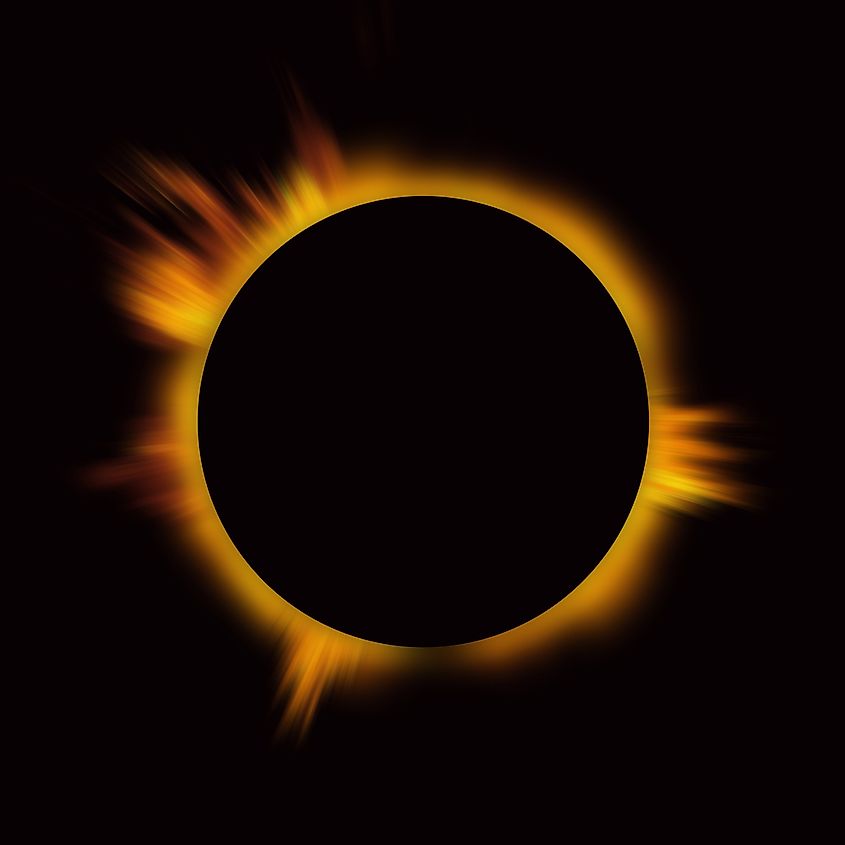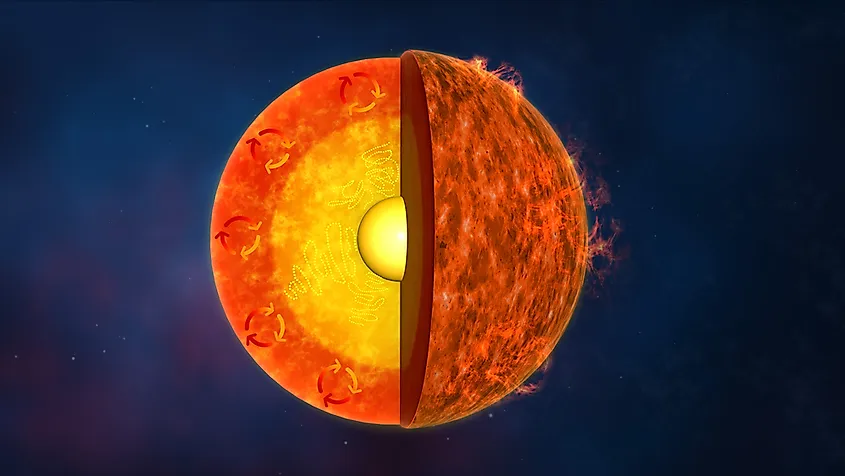Layers of the Sun Easy Draw Pictures
What Are The Layers Of The Sun?

- The layers of the Dominicus are divided into two larger groups, the outer and the inner layers. The outer layers are the Corona, the Transition Region, the Chromosphere, and the Photosphere, while the inner layers are the Core, the Radiative Zone, and the Convection Zone.
- There are 4 outer layers of the Sun, and the Corona is the outermost i. It starts at about 1300 miles above the photosphere, and its temperature is measured to be around 900,000 degrees Fahrenheit.
- There are iii inner layers of the Sun, and the Convection zone is the outermost 1. It completely surrounds the next layer, the Radiative zone, afterwards which nosotros have the Cadre, every bit the innermost layer of the Sun.
Just like our planet, and nearly other celestial bodies, the Sun is divided into distinct layers. The critical difference is that the Sun is not solid, unlike Globe, so the layers are a bit harder to decide. Because the Sun is mostly equanimous of helium and hydrogen and is not solid, it does not accept an outer boundary that is conspicuously defined.
Nonetheless, nosotros can make up one's mind the internal structure of the Lord's day, and it is made up of seven unlike layers. The layers of the Sun are divided into two larger groups, the outer and the inner layers. The outer layers are the Corona, the Transition Region, the Chromosphere, and the Photosphere, while the inner layers are the Core, the Radiative Zone, and the Convection Zone.
The Outer Layers
- Corona
- Transition region
- Chromosphere
- Photosphere
There are four outer layers of the Sunday, and the Corona is the outermost i. It starts at near 1300 miles in a higher place the photosphere, and its temperature is measured to exist effectually 900,000 degrees Fahrenheit. It is incommunicable to run into the Corona with the naked eye, just there is an exception. We are able to come across it during a solar eclipse, or past using a special device called the coronagraph. There is no upper limit to the Corona.
Information technology is followed by the Transition region, which is an extremely narrow layer that divides the Chromosphere from the Corona. Its width is only 60 miles, which is incredibly small for a layer on a body as large as the Sun. This layer marks the spot where the temperatures ascent tremendously since the Corona layer is much hotter than the Chromosphere.

The Chromosphere is the layer we observe between the distances of 250 and 1300 miles from the solar surface. The temperatures in this layer vary profoundly, with the parts that are further from the solar surface being much hotter than the ones that are closer to it. Notwithstanding, it does not compare to the temperatures that are reached in the Corona layer. Information technology is an interesting thing to discover how the temperature in these layers grows the farther abroad we motion from the centre of the Sun.
The Photosphere is the last, innermost layer of the outer layers of the Sunday. We are able to notice this layer directly, and its temperatures vary between eleven,000 and half-dozen,700 degrees Fahrenheit. The majority of this layer is covered past granulation, which is caused by bubbling gases and sunspots from magnetic fields.
The Inner Layers
- Convection zone
- Radiative zone
- Core
There are iii inner layers of the Sun, and the Convection zone is the outermost one. It completely surrounds the next layer, the Radiative zone.
In this layer, all of the hot material found virtually the center of the Dominicus rises cools down and drops dorsum into the radiative zone to get more than rut. This is the movement that creates sunspots and solar flares. This layer marks the edge of what we usually refer to as the Sun.

The radiative zone is the 2nd inner layer of the Sun. Information technology sits outside of the cadre, and it holds its extremely loftier temperature. The zone itself has a temperature of around 7 million degrees Fahrenheit. This layer serves every bit a passage for all the energy that is released past the cadre. Photons travel through the radiative zone, and they can't travel through long ranges of space, so it takes almost 50 million years for a photon to travel through this layer of the Sun.
Finally, we take the cadre, every bit the innermost layer of the Sun. The core is plasma, only its motion is extremely similar to that of a gas. The temperature of the core of the Sunday is effectually 27 million degrees Fahrenheit. In the cadre, nuclear reactions occur that create helium from hydrogen atoms. This releases huge amounts of free energy, and it starts to move outwards toward the other layers. This energy somewhen becomes the low-cal and heat we receive on Earth.
Source: https://www.worldatlas.com/articles/what-are-the-layers-of-the-sun.html
0 Response to "Layers of the Sun Easy Draw Pictures"
Enregistrer un commentaire